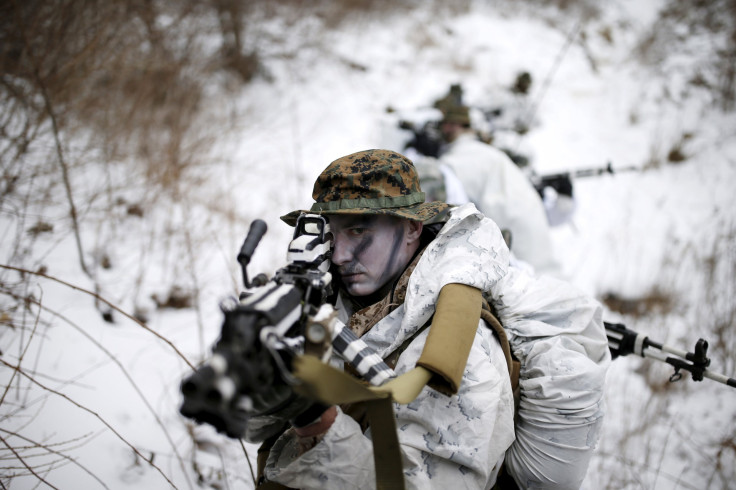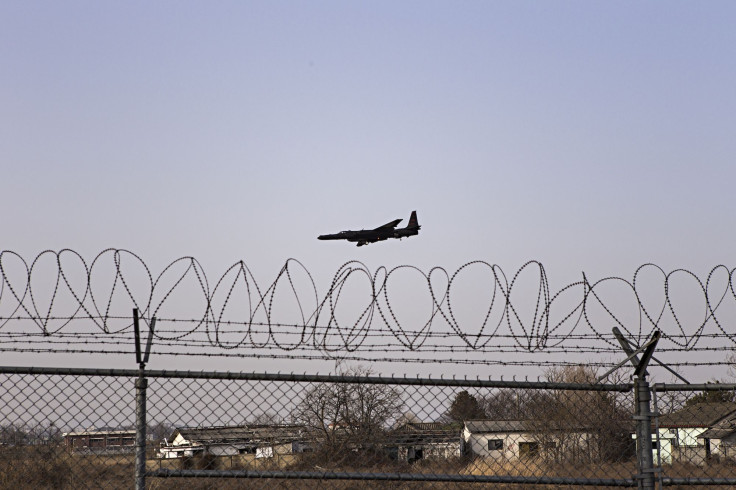South Korea, US Begin Military Exercises Despite Threats Of ‘Pre-Emptive Nuclear Strike’ By North Korea

Following threats from North Korea of launching a “pre-emptive nuclear strike” against the United States and South Korea, both the countries began their joint military drills Monday with a special focus on boosting their wartime capability that will help launch precision strikes on Pyongyang’s top leadership in case of war. Over 300,000 South Korean and 17,000 U.S. troops will participate in the drills, making it the largest ever annual military exercise between the two countries.
The Key Resolve and Foal Eagle exercises began their week-long schedules amid increasing tensions between the two Koreas after Pyongyang’s rocket launch last month, and nuclear and long-range missile tests earlier this year, Yonhap reported. In addition to the troops, the U.S. will also send the nuclear-powered aircraft carrier USS John C. Stennis (CVN-74), a nuclear-powered submarine, aerial tanker aircraft and the B-2 stealth bomber for the exercises. South Korean defense minister Han Min-koo said, according to BBC, that the exercises will be twice the size of that conducted last year.
The Yonhap report cited military sources saying that the exercises will incorporate the OPLAN 5015, which lays down the operations to launch precision attacks against North Korea’ senior leadership, and the nuclear and missile arsenal in case a war breaks out. The U.S. and South Korea are also incorporating the new “4D” anti-North operational plan, which details the pre-emptive strikes the allies would launch, aiming at detecting, disrupting, destroying and defending the region against North Korea’s nuclear and missile arsenal, according to Yonhap.
“The focus of the exercises will be on hitting North Korea’s key facilities precisely,” a South Korean military official told Yonhap. While the Key Resolve exercise will continue till mid-March, the foal Eagle exercises will go on till late April.
The allies also began Ssangyong exercises, the biennial joint amphibious exercise that involves over 5,000 South Korean marine and navy personnel, along with 7,000 U.S. marine troops. During the drill, over three U.S. Navy ships would be mobilized while forces would be trained to conduct special operations and land combat forces near the North Korean targets, officials reportedly said.

Meanwhile, North’s powerful National Defense Commission has threatened to begin strikes against South Korea and the U.S, if the drills continue. Pyongyang said, according to the Associated Press (AP) that its enemies “are working with bloodshot eyes to infringe upon the dignity, sovereignty and vital rights” of North Korea.
“If we push the buttons to annihilate the enemies even right now, all bases of provocations will be reduced to seas in flames and ashes in a moment,” according to the statement from North Korea.
The latest drills and the threats from North Korea came after the United Nations slapped sanctions against the Kim Jong Un-led country, while the South Korean President Park Geun-hye urged her lawmakers to impose additional sanctions against Pyongyang.
While the North Korea claims that it is making progress in terms of nuclear weapons, critics claim that the country’s arsenal may just consist of only a few still-crude nuclear bombs. There are also speculations if the country has mastered the miniaturization process, a move needed to mount the bombs on warheads. Questions have also been raised about whether the country has a reliable long-range missile that can carry such a bomb to the U.S.
“Now, what matters is to thoroughly implement the Security Council sanctions to make sure that North Korea will abandon its nuclear program and move toward change,” Park said in a meeting with her aides, according to Yonhap. She also asked the country's top officials to cooperate with the U.N. in order to implement the sanctions and “continue to make efforts for bilateral and multilateral sanctions.”
© Copyright IBTimes 2025. All rights reserved.






















